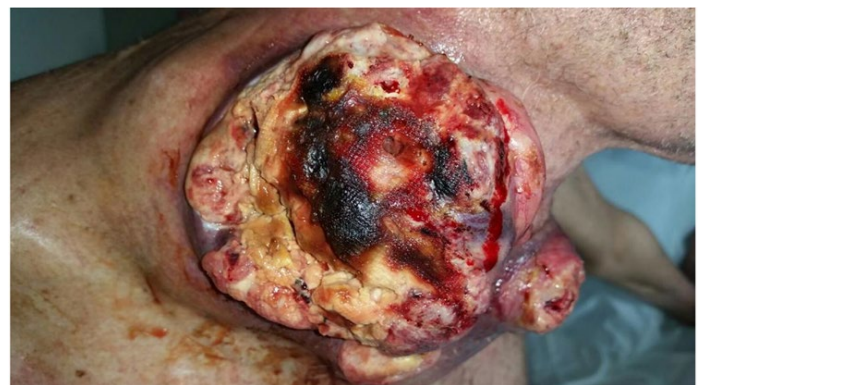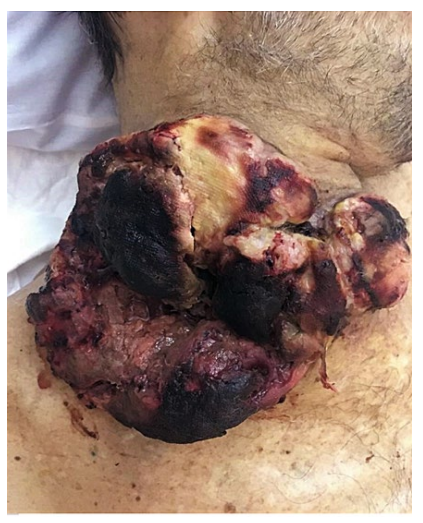A 55-year-old male presented with a bleeding mass on the right supraclavicular fossa and one-week history of right arm weakness and neuropathic pain. He had a history of tongue squamous-cell carcinoma (SCC) for which he underwent left hemiglossectomy, lymphadenectomy and adjuvant radiotherapy but recently recurred with regional adenopathy and pulmonary metastasis (stage IV-C). Despite treatment with carboplatin, paclitaxel and cetuximab, a bulky unresectable supraclavicular mass developed.
On examination he had a voluminous (>8 cm wide), friable, malodorous, ulcerated mass, with blood oozing and satellite lesions (Fig. 1). Imaging showed an extensive necrotic mass with right brachial plexus involvement and histology was compatible with SCC metastasis.
Admission on palliative care unit granted symptom control through analgesics, palliative chemotherapy, radiotherapy and goal-directed wound dressings aiming exudate, bleeding and odour management. Alginates, charcoal, sucralfate paste, topical metronidazol, haemostatic foams, cold saline and absorbing pads were used as needed.
Fast exophytic growth followed reaching more than 14 cm wide, with abundant necrotic tissue, which partially detached by gravity (Fig. 2). Due to high bleeding risk dark towels were kept in the room and rescue midazolam and aminocaproic acid were prescribed. He died peacefully four months later.
Malignant wounds (MW) develop in up to 15% of patients with advanced cancer, mainly from breast followed by head and neck tumours.1,2They result from cancerous cell infiltration and proliferation on the skin leading to loss of vascularity and tissue necrosis presenting as non-healing wounds.1-3
Main symptoms include odour, pain, exudate, haemorrhage, pruritus, lymphedema and bulk effect causing emotional distress and poor quality of life.1,2
MW are probably underreported, contributing to the lack of literature on the subject.2Since MW rarely heal, a palliative care model should be pursued aiming symptom and wound management paired with treatment of the underlying tumour if possible and appropriate.3
Declaração de Contribuição / Contributorship Statement:
Filipa R. Rocha - Elaboração do manuscrito, Preparação de imagens.
I. Romero, I. G. Neto - Contribuição intelectual, Revisão do manuscrito.

















